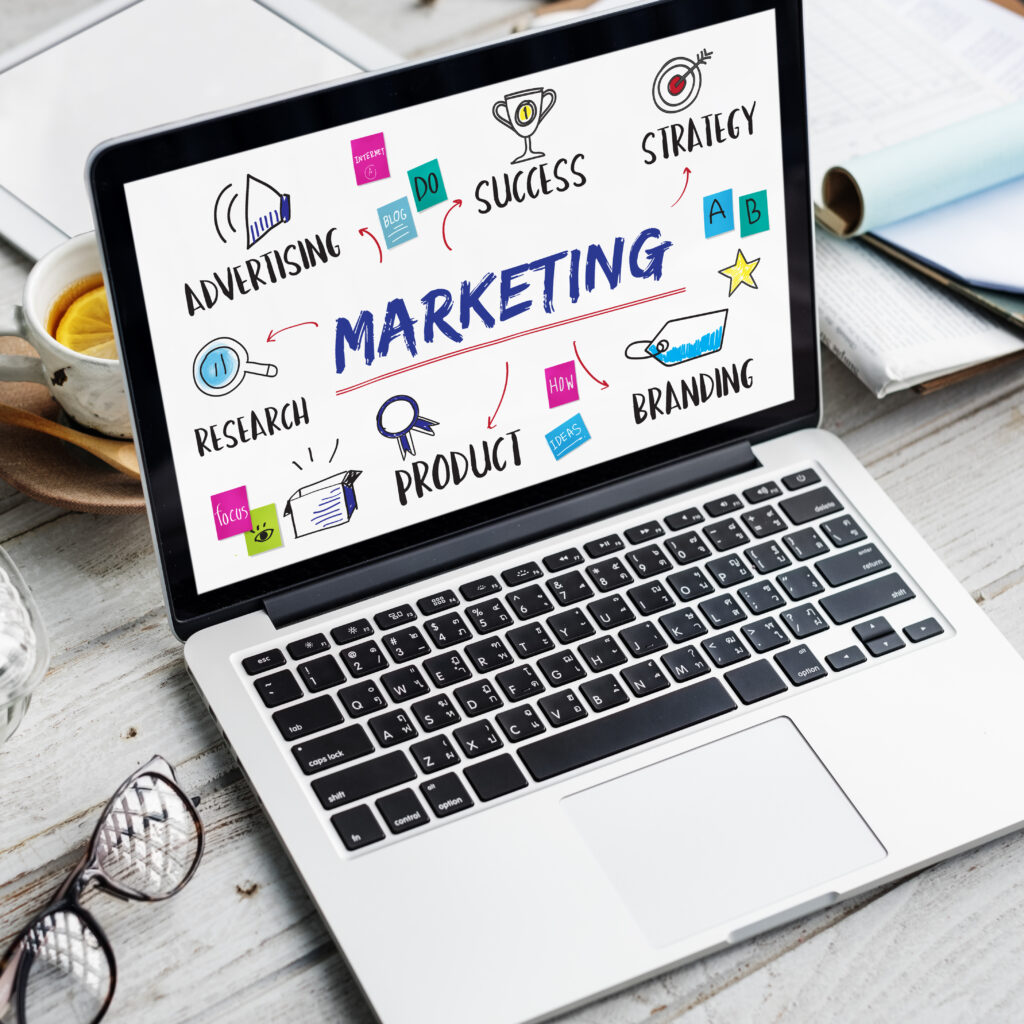Introduction: Small Budget, Big Impact
Imagine growing your business without draining your bank account. Sounds too good to be true? For many small business owners, marketing feels like a luxury they can’t afford. But here’s the truth: you don’t need a six-figure budget to make a big splash. In fact, some of the most successful brands started with little more than creativity, consistency, and smart, low-cost marketing strategies.
Today, more than ever, small businesses have access to tools and platforms that level the playing field. Whether you run a local bakery, offer freelance design services, or sell handmade crafts online, you can reach your ideal customers without breaking the bank. The key? Knowing where to focus your energy and how to use limited resources effectively.
In this article, we’ll explore seven proven, low-cost marketing strategies that deliver real results. From leveraging the power of social media to building genuine relationships in your community, these approaches are not only affordable—they’re scalable and sustainable. We’ll break down each strategy with practical tips, real-world examples, and actionable steps you can take today.
So if you’ve been putting off marketing because you think it’s too expensive, it’s time to rethink that belief. Let’s dive in and discover how you can grow your business with minimal investment—but maximum impact.
1. Master the Art of Social Media Marketing
Social media isn’t just for influencers and big brands. It’s one of the most powerful—and affordable—marketing tools available to small businesses today.
Platforms like Instagram, Facebook, TikTok, and LinkedIn allow you to connect directly with your audience, showcase your products or services, and build brand awareness—all for free. The best part? You don’t need thousands of followers to make an impact. Even a small, engaged audience can lead to loyal customers and word-of-mouth referrals.
Start by choosing one or two platforms where your target customers spend their time. A local coffee shop might thrive on Instagram with beautiful photos of lattes and cozy interiors, while a B2B consultant could find leads on LinkedIn through thoughtful posts and networking.
Consistency beats perfection. Post regularly—three to five times a week—and mix content types: behind-the-scenes shots, customer testimonials, quick tips, and user-generated content. For example, a boutique clothing store could repost photos of customers wearing their outfits (with permission, of course), turning shoppers into brand ambassadors.
Use free tools like Canva to create eye-catching graphics and CapCut or InShot for simple video editing. Schedule posts in advance using free versions of apps like Buffer or Meta Business Suite.
And don’t forget to engage. Reply to comments, answer questions, and follow local accounts. This builds trust and shows you’re not just selling—you’re listening.
Pro Tip: Run a small giveaway (e.g., “Tag a friend who needs this!”) to boost visibility. Even a $20 prize can generate hundreds of new followers.
Social media isn’t about going viral overnight. It’s about showing up, being helpful, and staying top-of-mind—without spending a dime on ads.
2. Leverage the Power of Email Marketing
While social media is great for visibility, email marketing is where real relationships—and sales—happen.
Think about it: when was the last time you ignored an email from a brand you love? Chances are, you open it, read it, and maybe even click through to buy. That’s because email lands directly in your inbox—no algorithm standing in the way.
The good news? You can start an email list for free using tools like Mailchimp, Brevo (formerly Sendinblue), or Moosend. These platforms let you collect emails, design beautiful newsletters, and automate follow-ups—all on a budget.
Begin by offering something valuable in exchange for an email address. This is called a lead magnet. Examples include:
- A free checklist (“5 Steps to Organize Your Pantry”)
- A discount code (“Get 10% off your first order”)
- A downloadable guide (“Beginner’s Guide to Indoor Gardening”)
Place sign-up forms on your website, social media bios, and even at your physical store (e.g., “Scan the QR code to get our free recipe book!”).
Once you have subscribers, don’t sell to them nonstop. Instead, focus on delivering value. Share helpful tips, exclusive content, and occasional promotions. For instance, a fitness coach might send weekly workout ideas, healthy recipes, and a monthly success story from a client.
Example: A local pet groomer sends a monthly “Pet Care Tip” email with grooming advice, seasonal reminders (like flea prevention), and a special offer for subscribers. Result? Higher retention and repeat bookings.
Email marketing has one of the highest ROI of any strategy—often $36 for every $1 spent. But even if you spend $0, you’re still building a loyal audience you own, not rent from social media platforms.
3. Build Trust with Content Marketing
People don’t buy from businesses—they buy from people they trust. And one of the best ways to build trust is through content marketing.
Content marketing means creating helpful, informative, or entertaining content that attracts and engages your audience. It’s not about hard selling. It’s about being useful.
You don’t need a blog or a fancy website to get started. Even a single YouTube video, Instagram carousel, or Facebook post can count as content marketing if it solves a problem for your customer.
Let’s say you run a plumbing service. Instead of just saying “We fix leaks,” create a 60-second video titled “3 Signs Your Toilet Is Wasting Water (And How to Fix It).” This positions you as an expert and helps people who are actively searching for solutions.
Other content ideas:
- How-to guides (e.g., “How to Store Fresh Herbs So They Last Longer” for a grocery store)
- Myth-busting posts (e.g., “No, You Don’t Need Expensive Skincare—Here’s Why” for a beauty brand)
- Local spotlights (e.g., “5 Hidden Gems in Downtown Austin” for a tour company)
The key is to answer questions your customers are already asking. Use tools like Google’s “People also ask” section or Ubersuggest to find popular search queries in your niche.
Bonus: Repurpose one piece of content across platforms. A blog post can become a video script, a series of social media tips, and an email newsletter.
Content marketing takes time, but it pays off. It improves your SEO, builds authority, and keeps customers coming back—not just for your product, but for your knowledge.
4. Partner with Other Local Businesses
Here’s a secret: you don’t have to compete with every other small business in town. In fact, collaborating with them can be one of your most effective marketing moves.
Local partnerships create win-win situations. You cross-promote, share audiences, and build community goodwill—all without spending on ads.
For example, a yoga studio could team up with a health food café. They co-host a “Wellness Weekend” with a morning class followed by a smoothie tasting. Both businesses promote the event to their email lists and social media, doubling their reach.
Other partnership ideas:
- Gift card bundles: A bookstore and a coffee shop offer a “Read & Relax” package.
- Referral programs: A hair salon and a nail technician refer clients to each other for a small commission.
- Pop-up events: A jewelry maker sets up a booth inside a clothing boutique for a weekend.
These collaborations don’t just drive sales—they build relationships. Customers love supporting businesses that support each other.
Real-World Example: In Portland, a local brewery partnered with a food truck and a record store to host “Vinyl & Hops” nights. The event became so popular it now happens monthly, drawing crowds from across the city.
Even simple gestures count. Leave flyers at a nearby business (with permission), offer to write a review for a partner, or shout them out on social media.
When you lift others up, they’re more likely to lift you back. And that kind of organic growth? Priceless.
5. Encourage and Showcase Customer Reviews
Would you rather take a stranger’s word for a product—or someone just like you?
Most people trust peer reviews more than ads. In fact, 93% of consumers say online reviews influence their purchasing decisions (BrightLocal, 2023). That’s why getting happy customers to share their experiences is one of the cheapest—and most powerful—marketing strategies.
But don’t wait for reviews to happen. Ask for them.
After a sale or service, send a friendly follow-up message:
“We hope you loved your new skincare routine! If you have a moment, we’d be grateful for a quick review on Google.”
Make it easy. Include a direct link to your Google Business, Yelp, or Facebook page. You can even create a QR code that leads to your review page and print it on receipts or packaging.
Once you get reviews, show them off. Feature them on your website, in social media posts, or even in your email signature.
Example: A landscaping company creates a “Customer Love” highlight on Instagram, sharing screenshots of 5-star reviews with photos of the finished yards.
Negative reviews? Don’t panic. Respond politely and professionally:
“Thanks for your feedback. We’re sorry we missed the mark and would love to make it right. Please reach out to us directly.”
This shows you care—and often turns unhappy customers into loyal ones.
And here’s a pro tip: ask for video reviews. A 15-second clip of a customer saying, “I love my new haircut!” is worth more than ten written reviews. Offer a small incentive (like a $5 coffee gift card) to encourage participation.
Word-of-mouth has always been powerful. Now, with online reviews, it’s amplified—and completely free to leverage.
6. Host Free Workshops or Webinars
People love learning new things—especially for free.
Hosting a free workshop or webinar is a brilliant way to attract new customers, showcase your expertise, and build trust—all while spending very little.
You don’t need a stage or a projector. A 30-minute Zoom call or a live session on Instagram can do wonders.
Let’s say you’re a financial advisor. Host a “Budgeting 101” webinar for young professionals. Or if you’re a baker, run a “Decorate Your Own Cupcakes” event at your shop (with materials for purchase, of course).
The goal isn’t to sell during the event. It’s to provide value first. Teach something useful, answer questions, and let your personality shine.
Afterward, follow up with attendees:
- Send a thank-you email with a recap and a special offer (“10% off your first coaching session”)
- Invite them to join your email list
- Ask for feedback and suggestions for future topics
Case Study: A small pottery studio in Denver started offering free 45-minute “Intro to Hand-Building” classes on weekends. Attendance grew from 5 to 30 people per session. Over time, 60% of attendees signed up for paid courses.
You can even repurpose the content. Record the webinar and turn it into a YouTube video, blog post, or social media series.
Free events position you as generous and knowledgeable. And when people like and trust you, they’re far more likely to buy from you later.
7. Optimize Your Google Business Profile (Formerly Google My Business)
If you have a local business, your Google Business Profile (GBP) is your digital storefront. And the best part? It’s completely free.
Yet, many small businesses either ignore it or set it up incorrectly. That’s a huge missed opportunity.
When someone searches “plumber near me” or “best coffee shop in Denver,” Google pulls results from GBP. If your profile is incomplete or outdated, you’re invisible—or worse, you look unprofessional.
Here’s how to optimize yours in under 30 minutes:
- Claim and verify your listing (go to google.com/business ).
- Fill out every section: business name, address, phone, website, hours, and category.
- Add high-quality photos of your store, team, and products.
- Write a clear, keyword-rich description (e.g., “Family-owned Italian restaurant serving handmade pasta since 1998”).
- Encourage reviews (as discussed earlier).
- Post regular updates—like events, offers, or new products—directly to your profile.
Pro Tip: Use Google Posts to share time-sensitive content, like “Weekend Special: Buy One, Get One Free on All Pizzas.” These appear right in search results!
A well-optimized GBP can double your visibility in local searches. It also improves your chances of appearing in the “Local Pack”—the map section at the top of Google results.
And don’t forget mobile users. Over 80% of “near me” searches happen on phones. A complete, accurate profile makes it easy for customers to find, call, or visit you with one tap.
This isn’t just a listing. It’s your 24/7 salesperson—working for free.
Putting It All Together: A Marketing Plan on a Budget
So, how do you bring all seven strategies together without feeling overwhelmed?
Start small. Pick one or two that align best with your business and audience. Focus on consistency, not perfection.
Here’s a sample 30-day plan for a small bakery:
- Week 1: Set up and optimize Google Business Profile. Add photos and post a “Grand Reopening” update.
- Week 2: Launch an email list with a free “5 Easy Baking Hacks” PDF. Promote it on social media and in-store.
- Week 3: Host a free 20-minute Instagram Live: “How to Make the Perfect Chocolate Chip Cookie.”
- Week 4: Partner with a nearby coffee shop for a “Coffee & Croissant” weekend special.
Track what works. Did the email sign-ups increase after the live session? Did foot traffic rise after the Google update? Use free analytics (like Instagram Insights or Google Analytics) to measure progress.
Remember: marketing isn’t about spending money. It’s about building relationships, providing value, and staying visible.
And the most beautiful part? These strategies compound over time. A single post might not change your business. But 50 posts, 100 emails, and 20 happy reviews? That’s how momentum builds.
Conclusion: You Don’t Need a Big Budget—You Need a Smart One
Marketing doesn’t have to be expensive to be effective. As we’ve seen, some of the most powerful strategies cost little to nothing—just time, creativity, and consistency.
From mastering social media and email marketing to hosting free workshops and optimizing your Google profile, these seven low-cost tactics can help you grow your business sustainably. The key is to start now, stay consistent, and focus on building real connections.
You don’t need a flashy ad campaign or a celebrity endorsement. You just need to show up, be helpful, and let your customers become your biggest advocates.
So ask yourself: Which one of these strategies can I implement this week? Maybe it’s setting up your email list. Or posting your first customer review. Or reaching out to a fellow business owner for a collaboration.
Take that first step. Small actions lead to big results.
And if you found this article helpful, why not share it with another small business owner who could use a boost? Or leave a comment below—tell us which strategy you’re trying first. We’d love to hear your story.
Because at the end of the day, marketing isn’t just about sales. It’s about community, connection, and believing in the value you bring. And that’s worth more than any budget can measure.

Danilo Ferreira is a passionate entrepreneur, travel, and financial freedom enthusiast, always seeking new ways to expand his horizons and live with purpose. Driven by a high-performance mindset, he combines discipline and curiosity to achieve ambitious goals, exploring the world while building projects that reflect his vision of independence and continuous growth.







